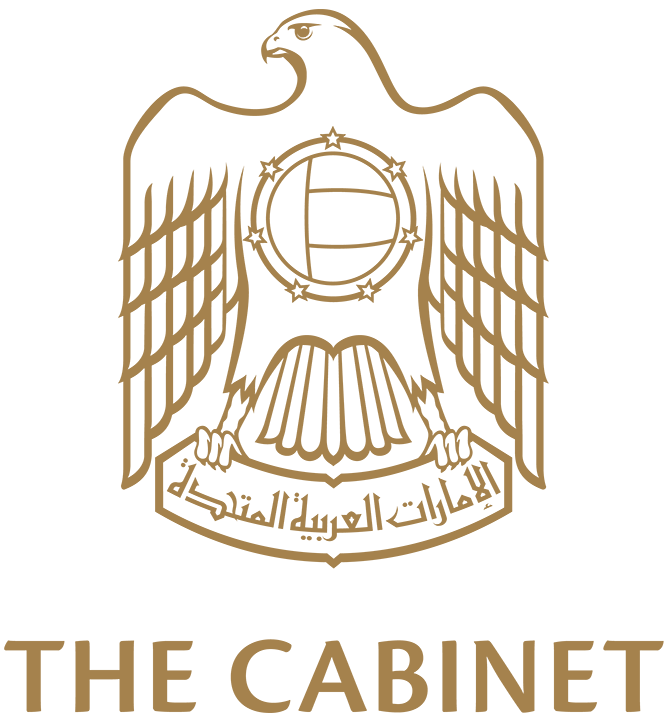- Article (1) Definitions
- Article (2) Objectives
- Article (3) Scope of Application
- Article (4) Responsibilities
- Article (5) Card
- Article (6) Climatic Conditions
- Article (7) Measurement Units
- Article (8) General Requirements for Product Control Operations
- Article (9) Additional Requirements for Automatic Equipment and Accessories
- Article (10) Product Testing Requirements
- Article (11) Operation Rules
- Article (12) Confirm Vehicle Identity
- Article (13) Type Declaration and Conformity Assessment Measures
- Article (14) Metrological Confirmation Requirements
- Article (15) General Provisions
- Article (16) Repeals
- Article (17) Publication and Enforcement
Article (1) Definitions
In the application of the provisions of this Resolution, the following words and expressions shall have the meanings indicated opposite each of them unless the context requires otherwise:
State: United Arab Emirates (UAE).
Ministry: Ministry of Industry and Advanced Technology.
Minister: Minister of Industry and Advanced Technology.
Competent Authorities: The Federal and Local Government Authorities in the State that falls within its jurisdiction to implement any of the provisions of this resolution.
Authorised Agency: Any Governmental Entity, whether Federal, Local or Private, officially authorised by the Ministry to carry out any of its tasks and powers stipulated in the provisions of this Resolution.
Owner: Police Departments that have the authority to install, operate and use Radar Devices for Measuring Vehicle Speed.
National Institute of Metrology: The Authority authorised by the Ministry to maintain the national measurement standards approved in the State and its maintenance.
Laboratory: The Entity that tests and calibrates Vehicle Speed Measuring Devices (Radar).
Calibration: The processes that are conducted to define the efficiency and accuracy of Measuring Devices and Tools.
Standard Specification: Document specifies the characteristics of the commodity, product, service, or everything that is subject to measurement, its description, properties, quality level, dimensions, metrics or safety and security Requirements therein. It also includes terms, symbols, testing methods, sampling, packaging, cards and marks.
Conformity Assessment: Any Activity used directly or indirectly to confirm that the good, product, material, or service meets the relevant Technical Requirements.
The Emirates Conformity Assessment Scheme (ECAS): The scheme that confirms the requirements specified in the approved Standard Specifications, directly or indirectly, such as examination, inspection, testing, Calibration or grant the Conformity Certificates.
Product: A Radar Device designed to measure the speed of vehicles on roads and is used to enforce the law concerning maximum speed limits specified in legislation issued by the relevant authorities.
Supplier: Anyone whose activity has an impact on the characteristics of the product, including the Manufacturer, importer, carrier, assembler, agent, warehouse, or any major or subsidiary distributor or any legal representative who is responsible for the import, installation, and operation of the product subject to the provisions of this Resolution, and who carries out his activity through a licensed company or individual establishment in the State in accordance with the relevant legislation.
Type Approval: Resolution that is issued, based on the type assessment report, certifying that this type of Measuring Device meets its legal Requirements, and accordingly issues a Type Approval Certificate.
Conformity Certificate: A Certificate issued by the Ministry, or the Conformity Assessment Entity which confirms the Conformity of the Product or any Batch thereof to the requirements of the Emirates Approved Standard Specifications “Mandatory standards”.
Conformity Assessment Authority: A Body registered, approved or accepted by the Ministry to carry out Conformity Assessment Procedure in accordance with the legislation in force, it includes examination and Calibration laboratories, inspection bodies, merit testing bodies, and certification bodies for systems, individuals or products.
Card: Card that shows the name and address of the Manufacturer of the Measuring Device or the address of the Importer, the serial number of the Measuring Device, its type or model, its function, characteristics, classification, method of use, capacity or load, its rating, year of manufacture, and any other mandatory basic information, whether it is placed through an electronic reader, barcode, or any other means.
Confirmation: Conduct a Conformity Assessment that results in the installation of a Confirmation Mark and/or the issuance of a Confirmation certificate.
Confirmation Mark: Mark affixed to a Measuring Device clearly certifying that Confirmation of the Measuring Device has been carried out and its Conformity with legal requirements.
Maximum Permissible Error: Maximum Permissible Error of the Measuring Device specified in this resolution, not to be exceeded.
Uncertainty in Measurement: Range within which it is believed that the true value of the measured quantity lies with a certain level of confidence, based on the data of the measurement process.
Article (2) Objectives
This Resolution aims to:
1. Compliance of new Vehicle Speed Measuring Devices (Radar) used in the UAE in accordance with the requirements of this resolution and not exceeding the Permissible Measurement Errors.
2. Improving the quality of Vehicle Speed Measuring Devices (Radar) used and ensuring the accuracy of the resulting measurements to protect the rights of road users in accordance with the best international standard specifications and metrological legislation.
Article (3) Scope of Application
The provisions of this resolution shall apply to the ultra-short wave Doppler Radar Device for measuring road speed, laser-based Radar Devices, or any other devices or modern global technology issued later for measuring Vehicle Speed. These devices are hereinafter referred to as the “Product”.
Article (4) Responsibilities
1. The Ministry shall be responsible for receiving and studying requests concerning registering the Product and granting it the Conformity Certificate in accordance with the provisions of this Resolution. Also, the Ministry may appoint an acceptable Conformity Assessment Authority to assess the Product conformity, in accordance with the Cabinet Resolution concerning the UAE Law for the Control of Conformity Assessment Bodies.
2. The Supplier shall obtain a Conformity Certificate for the product before it is put on the market or supplied to the Owner entities in accordance with the requirements of this resolution.
3. Traffic Departments in Police Departments shall be responsible for ensuring that the product has a Conformity Certificate before it is put into use, in addition to ensuring that it meets the metrological Confirmation requirements specified in this resolution.
Article (5) Card
The product card includes the following information:
a. Manufacturer and trademark name.
b. Item number.
c. Factory or commercial agent address.
d. Device Serial Number.
e. Determine which accessories need to be connected with the device.
f. Any other information provided in accordance with the instructions of the Manufacturer or Owner of the Radar.
Article (6) Climatic Conditions
1. The product shall be able to withstand the climatic conditions in the UAE that may affect its operation including temperature, humidity, vibration, wind speed and rain.
2. Type approval and Conformity Assessment tests shall include evidence of passing tests for these climatic conditions.
3. The cabins used for the product shall comply with the standards approved by the relevant authorities.
Article (7) Measurement Units
The legal units of measurement approved in the UAE are km/hour. To express a measure of speed.
Article (8) General Requirements for Product Control Operations
1. UAE Traffic Departments shall not use or install a product that has not been confirmed to ensure that the maximum error allowed in this resolution is not exceeded. Confirmation shall be repeated periodically annually and after performing any maintenance operations that may affect the main tasks.
2. The Ministry or the entity authorised by it shall provide all the necessary tools for Confirmation and Calibration, provided that the reference standards are serialized to the national standards in the UAE National Metrology Institute or the international standards and have a valid Calibration certificate from Calibration laboratories accredited by an internationally recognized accreditation body and signed the ILAC MRA Signatory International Mutual Recognition Agreement.
3. In case of confirming the product for the first time, a Calibration Certificate shall be provided by the laboratories accredited by the Ministry before starting the Confirmation process.
4. Traffic Departments in Police Departments shall be provided with a valid Calibration Certificate for the product and all data shall be kept to be made available upon request, provided that the Calibration Certificate includes the following main requirements:
a. Name of provider/Person.
b. Manufacturer name/model number/serial number of the product being calibrated or confirmed.
c. Calibration/Confirmation date and serial number of Calibration/Confirmation Card.
d. All data required for the Calibration certificate in accordance with the requirements of the international standard ISO/IEC 17025.
e. Visual inspection result and product condition Confirmation before starting Calibration or Confirmation.
f. Model Conformity Certificate Number, if any.
g. Name and signature of Calibration/Confirmation Technician.
Article (9) Additional Requirements for Automatic Equipment and Accessories
The Ministry or the entity authorised by it shall conduct the following tests on automatic equipment and accessories before starting Confirmation operations:
1. All routine operational tests and recording of results for automatic equipment and product accessories placed in use.
2. Perform a visual inspection of the lighting unit.
3. Confirm the time measurements used with at least three readings.
4. Check all lights, ignition switches, controls, connectors and additional components for proper operation.
Article (10) Product Testing Requirements
1. UAE Traffic Departments shall conduct all routine operating tests and record the results.
2. The operating frequency of the product is measured within the operating range specified by the Manufacturer and the results are recorded.
3. The product measurements are confirmed to cover the entire scope of control, taking into account the speeds specified in the UAE.
4. The proper operation of the product is confirmed in accordance with the relevant standard specifications and the results are recorded and documented.
5. Ensure that general safety standards are available for products used in the operation and maintenance of the product.
Article (11) Operation Rules
1. The product shall be installed and used in accordance with the instructions contained in the Manufacturer's user manual and approved by the type certification body.
2. The Manufacturer user manual should include the following:
a. Device operation theory.
b. Interpretation of the general operating plan.
c. Precise specifications for normal operating conditions.
d. All types of operation.
e. Information about the main causes of errors.
f. Possibility of retrieving all quantities affecting the measurement.
3. In the case of products designed to operate without supervision, the measurements shall be proven to be within the Maximum Permissible Error limits and this shall be stated in the manual, and in the case of using statistical methods, the uncertainty shall not be less than 8.99%.
4. The product shall include methods for continuous Confirmation of the main operations of the device, and additional methods such as double-checking the vehicle at a certain time interval may be used.
Article (12) Confirm Vehicle Identity
The vehicle identity (such as the colour and plate number of the vehicle) shall be determined in accordance with the technical requirements of the International Organization for Legal Metrology (OIML) standard specification No. R 91 and the technical requirements of the vehicle registration and licensing authorities.
Article (13) Type Declaration and Conformity Assessment Measures
1. The Supplier shall obtain a Conformity Certificate for the product Measuring Devices before placing them in general use in accordance with the procedures of the registration system in the Emirates Conformity Assessment System (ECAS).
2. Obtain a Conformity Certificate, importers or Manufacturers of products shall submit a Conformity Certificate Assessment for the approved type issued by an internationally recognised body such as:
a. Type approval certificates issued by the International Organization for Legal Metrology in accordance with OIML R91.
b. Notified Bodies in accordance with EU Directives.
3. All products used shall be equipped with a means to physically protect them from tampering in the area that affects the measurement result, and it is prohibited for there to be any possibility of modifying these products without removing the protection device.
Article (14) Metrological Confirmation Requirements
The Confirmation of products shall be carried out by the Ministry or any entity authorised by it to carry out metrological Confirmation operations to confirm the accuracy of speed and time measurements using Calibration devices bearing Calibration certificates issued by accredited laboratories. The entity owning these products bears the costs of Confirmation, Calibration and transfer of standards.
1. Initial Confirmation:
a. All products shall undergo initial inspection before being put into use.
b. The products shall be subject to visual inspection tests to ensure that there are no deformities or deviations.
c. That the products pass the tests specified in this resolution.
d. The Maximum Permissible Error in speed measurement shall not exceed 3 km/h or 3% for speeds exceeding 100 km/h.
e. The Metrological Confirmation Mark shall be placed on the Consumer Meters being confirmed.
f. Ensure that the Calibration Certificate of time Measuring Devices (date and time clock) is serialised to national or international standards.
2. Periodic Confirmation:
a. All products used are periodically checked once a year.
b. The products shall be subject to visual inspection tests to ensure that there are no deformities or deviations.
c. The Maximum Permissible Error in speed measurement shall not exceed 3 km/h or 3% for speeds exceeding 100 km/h.
d. The Metrological Confirmation Mark shall be placed on the Consumer Meters being confirmed.
3. Post-Maintenance Confirmation:
a. In the event that maintenance is required for any product in a way that may affect the measurement results, the product shall be suspended from working immediately and the product shall be re-confirmed to confirm the measurement accuracy of the product after performing the necessary maintenance.
b. Maintenance shall be carried out by workshops registered in the Ministry Legal Measuring Devices Workshop Registration System.
c. The tests specified in Clause (2) of this Article shall be conducted.
4. Unannounced Confirmation:
a. Unannounced Confirmation shall be carried out upon the request of the Ministry, upon receipt of a complaint, or for implementing Metrological Confirmation and control plans.
b. For Confirmation purposes, the tests stated in Clause (2) of this Article shall be conducted.
Article (15) General Provisions
1. The Ministry shall be responsible for implementing the provisions of this Resolution. For that purpose, it may take the measures it deems appropriate, and it may delegate some of its powers and functions.
2. This Resolution shall not prevent inspectors of the Competent Authorities from conducting other examinations to ensure that the detergents comply with the mandatory requirements stipulated in other legislations.
3. All parties concerned with implementing this resolution shall provide the Ministry with all the assistance and information it requests related to the implementation of its provisions.
4. Calibration laboratories operating in the field of Calibration of Radars shall be accredited in accordance with the international standard (ISO/IEC17025).
5. If any situation arises that cannot be addressed in accordance with the provisions of this resolution, or if any dispute arises in its interpretation or application, the matter shall be referred to the Minister or his authorised representative to issue the resolution he deems appropriate concerning that situation or that dispute based on international practices and in a way that achieves the public interest.
Article (16) Repeals
Any provision that violates or contradicts the provisions of this Resolution shall be repealed.
Article (17) Publication and Enforcement
This Resolution shall be published in the Official Gazette and it shall be enforced (180) days after the date of its publication.
Translated in cooperation with





